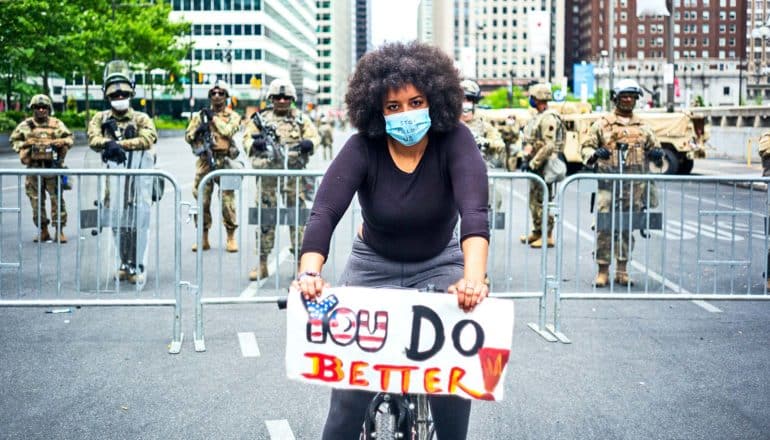
The problem of police brutality against black Americans isn’t caused by “a few bad apples” on police forces, a new paper argues.
Recently, Minneapolis police officer Derek Chauvin was arrested and charged with third-degree murder and manslaughter after a widely circulated video showed him kneeling on the neck of George Floyd for more than eight minutes.
Floyd, a black man who the police suspected of using a counterfeit $20 bill, died after repeatedly calling out that he could not breathe.
“…training and interventions that change the way police interact with black neighborhoods are needed.”
Since then, protests have broken out across the country, calling for justice for Floyd and for other black victims of excessive force by police.
“In explaining these events, the common understanding has been that there are some ‘bad apples’ among police forces who exert excessive force due to personal conscious bias or implicit racial bias,” writes Michael Siegel, a professor of community health sciences at the Boston University School of Public Health, in a new article on racial disparities in police use of deadly force in the Boston University Law Review.
However, according to Siegel, growing evidence suggests that the issue is not only about individual officers and individual black civilians, something that many cities have tried to address with bias training.
Instead, Siegel says, it is about structural racism—in the form of residential segregation—affecting neighborhoods, not individuals.
In a study published in the Journal of the National Medical Association last year, Siegel and colleagues found that racial residential segregation was the predominant factor explaining why some cities have greater black-white racial disparities in fatal police shootings—even after controlling for a city’s crime rate, median income, racial composition of its police force, and other factors.
In his new article, Siegel examines this and other empirical evidence using critical race theory and the Public Health Critical Race Praxis.
He finds that segregation plays a key role because of the way that officers interact with predominantly black neighborhoods. “Interventions, such as inherent-bias training, aim to alter the way police officers interact with black individuals,” he writes. “The empirical evidence… suggests that training and interventions that change the way police interact with black neighborhoods are needed.”
That is the immediate action for city policymakers to take, according to Siegel. But ultimately, he says the issue can be remedied by racially integrating neighborhoods and otherwise pouring resources into neighborhoods affected by racial inequities.
“While the focus of police training has typically been related to the person and the situation, more attention needs to be given to the place,” Siegel writes.
Source: Boston University
The post Police brutality isn’t about ‘a few bad apples’ appeared first on Futurity.
from Futurity https://ift.tt/2MrTgd6
No comments:
Post a Comment